Consumers Seek Diverse, Inclusive Marketing
As more consumers seek diverse and inclusive representation in media, authentic marketing will undoubtedly resonate with conscious shoppers looking to buy from brands that align with their values, finds The Plumb Club (TPC) Industry & Market Insights 2021 report, which included a survey of 1,000 U.S. jewelry consumers earlier this year.
The jewelry industry has long overlooked whole segments of customers, cites TPC Insights, largely ignoring LGBTQ+ customers and other segments like Black and People of Color in their marketing.
The industry’s advertising methods, even the design of jewelry stores have sent a clear message that established jewelers focus on selling jewelry to traditional couples — typically cisgender, straight, and white.
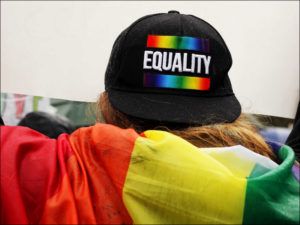 Courting LGBTQ
Courting LGBTQ
You would think that in the past six years since the United States legalized same-sex marriage with the Supreme Court ruling in June 2015 that the jewelry industry would have been courting this community more aggressively. The reality is that states began legalizing same-sex marriage in 2004, so jewelers have had actually 17 years of time to learn who the LGBTQ+ community is and how they are different than traditional wedding couples.
Out front in retail has been Tiffany & Co. The 184-year-old jeweler has been marketing to same-sex couples since 2015, with ads expanding its portrayals of marriage. Tiffany debuted this June its first men’s engagement ring ad, as it looks to tap into a new market for its high-end jewelry amid a rise in same-sex marriages globally and gender-fluid fashion trends.
The jeweler’s new line of men’s diamond solitaire engagement rings feature round brilliant and emerald cut diamonds up to 5 carats. Its aspiration was to offer products in support of love and inclusivity, while “paving the way for new traditions to celebrate unique love stories and honor cherished commitments.”
Also during pride month this June, Tiffany debuted its new “Stand for Love” campaign spotlighting New Yorkers from the LBGTQ+ community in a short video sharing what they stand for and how it all comes down to love. Not limited to one month, Tiffany’s LGBTQIA+ Employee Resource Group supports local LGBTQ+ causes, Ali Forney Center and SAGE, throughout the year.
Jonathan Cohen, president of IB Goodman, Newport, Kentucky, known for its men’s collections, reported that men’s diamond rings were the stars of the show at JCK Las Vegas, and in larger (1.5-3 carat) total weights. In fact, men’s diamond rings have been a bestselling category for the company for years.
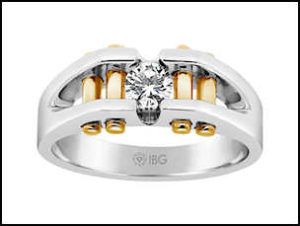 Acknowledging the impact that Tiffany will have on the category at retail, IB Goodman launched a new trade campaign touting men’s diamond solitaire engagement rings. He says that he sees many opportunities and lots of room for new traditions to be made in the commitment/engagement/wedding category.
Acknowledging the impact that Tiffany will have on the category at retail, IB Goodman launched a new trade campaign touting men’s diamond solitaire engagement rings. He says that he sees many opportunities and lots of room for new traditions to be made in the commitment/engagement/wedding category.
Harry Fiorentinos, director of sales and marketing for Novell Global, concurs. He says the brand’s 42-ring plain band display has been its most successful tool to help retailers and customers. “They can be wedding bands, but they can also be part of a cool stack, a thumb or index finger ring, or worn on a chain,” he describes of the new rules of engagement. “We especially love seeing our plain bands paired with sparkly, diamond band offerings. With the selection of widths, finishes, and textures in the 42-ring display, the options are infinite. It’s a playground that lets the customer’s imagination run wild.”
The Knot reports in its 2019 Jewelry & Engagement Study that while 96% of couples exchange rings at the start of their engagement, there are couples also proposing with non-ring items that are just as meaningful, including watches and bracelets. In fact, Refinery29 reports that engagement watches have been flying quietly under the radar and have been gaining traction lately.
Katie Brownstein, director of marketing at wedding planning company Joy, told that Today Show in July that nontraditional symbols of commitment have been popping up for several years, but really took root in 2020. “We all took a moment to reflect and many traditions no longer hold the same weight post-pandemic. For some couples, an engagement ring does not feel authentic to them, so an alternative like a watch may be a more personal symbol of their commitment.”
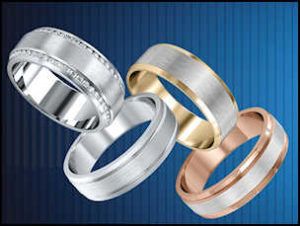 Not Just Rainbows
Not Just Rainbows
Matthew Perosi, a partner in Jeweler Websites, a jewelry e-commerce website company based in New York, says the general advertising approach used by retail jewelers to attract LGBTQ+ persons still includes rainbows and rainbow jewelry. Perosi, and his business partner George Blair, are known for providing staff training, market research, and understanding for the jewelry industry through their Jewelers Equality Alliance agency services (jealliance.com).
“When it comes to the jewelry industry’s understanding about how to attract the LGBTQ+ community, the general, and incorrect, sentiment is to include a line of rainbow color stones or colorful spectrum jewelry,” describes Perosi. “It really shows a lack of understanding the target customers.”
Moreover, Blair says the LGBTQ+ community is being forced to search for phrases that jewelers are using instead of phrases they’d rather use. “We’d like to search for ‘same-sex jewelry’ or ‘same-sex engagement rings,’ but jewelers use marketing phrases like ‘gay/lesbian engagement rings’ or ‘gay/lesbian wedding rings.’” It’s evident in Google search results, he says, for LGBTQ+ jewelry or any phrase including the words gay, lesbian, or transgender and the word jewelry results in rainbow pride jewelry.
Many jewelry stores are still afraid they will alienate existing customers by creating marketing campaigns that show same-sex and gender-neutral couples sharing tender or casual, everyday moments at home or in public. “It’s simple for every jeweler to re-imagine their ads with a couple of men, a couple of women, or a couple of people whose genders are not apparent,” Perosi and Blair say. “The ad copy would further reinforce the support, particularly if it does not feature language that pats itself on the back for acknowledging diversity. If the display of same-sex couples together is something a jeweler is not willing to commit to, then the easiest way to portray inclusivity is to show a bride or groom by themselves rather than always showing heterosexual couples.”
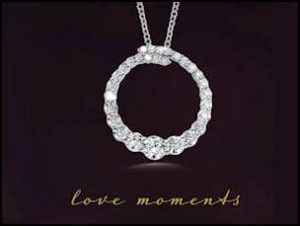 Today’s jewelers are still in a very unique position to help the LGBTQ+ community establish new rules of engagement for wedding rings and jewelry, says Perosi. “There’s plenty of opportunity for jewelers to win the loyalty of the LGBTQ+ community with honest displays of inclusiveness.”
Today’s jewelers are still in a very unique position to help the LGBTQ+ community establish new rules of engagement for wedding rings and jewelry, says Perosi. “There’s plenty of opportunity for jewelers to win the loyalty of the LGBTQ+ community with honest displays of inclusiveness.”
Increase BIPOC Representation
The same disparities that exist in the jewelry industry for the LGBTQ community exist for people of color and other marginalized communities in representation in marketing.
A March 2021 story on Voice of America (VOA) media reports that interracial relationships are just starting to be represented more in advertising. Over 50 years after the U.S. Supreme Court struck down laws banning interracial marriage, a more ads are featuring interracial couples with biracial children.
“The public is no longer simply interested in which product might be slightly better,” Subodh Bhat, a marketing professor at San Francisco State University in California told VOA. “They want to feel good about the company’s values.”
Parag Desai of SDC Designs underscores that diversity is central to his company’s business strategy, and exactly what makes America special and beloved. Under the SDC umbrella, the Vera Wang LOVE Collection debuted in February its LOVE campaign featuring real couples, representing same-sex and interracial couples. A fresh, young, inclusive video hails love alive, resilient, a journey, a rollercoaster, and a symphony.
Cora-Lee Colaizzi, director of marketing and catalogs and senior merchandiser for Quality Gold says the company incorporates lifestyle and glam images showing consumers of different ethnic backgrounds, different skin tones, and different ages on its website and social media, marketing, and catalogues, and is available to retailers. The company is also boldly pursuing men’s jewelry, men’s engagement rings, and men in pearls, with Colaizzi citing the category full of opportunity and ripe for success for the retailers willing to invest in it.
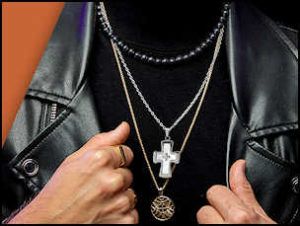
Leave a Reply
You must be logged in to post a comment.